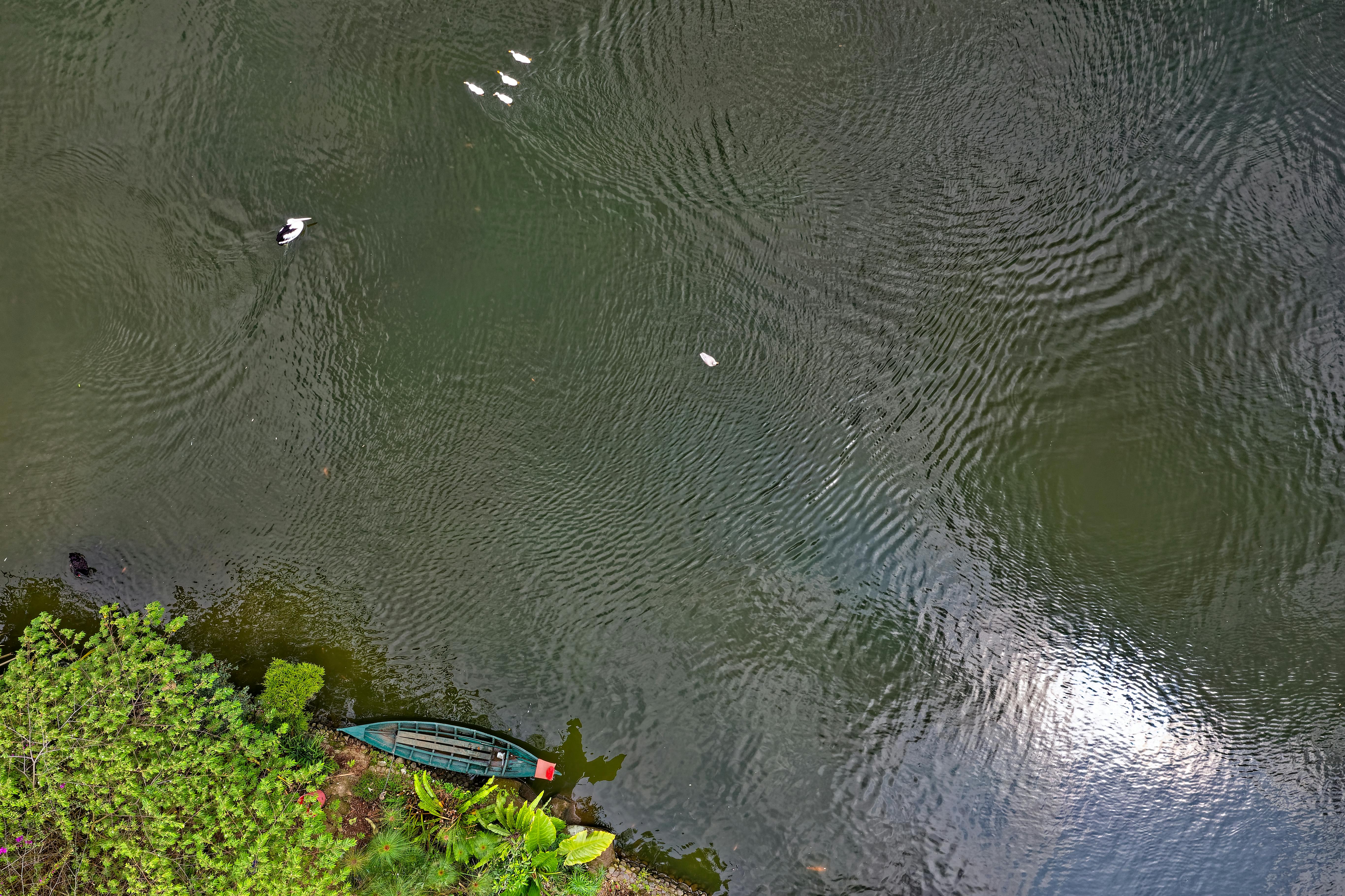Fruit trees provide a great source of nutrition and can be an attractive addition to any garden. However, birds can be a problem for fruit trees as they can eat the fruit before it has ripened. Fortunately, there are some simple steps that you can take to protect your fruit trees from birds. In this article, we will discuss how to protect your fruit trees from birds and keep them healthy and productive.The best way to deter birds from fruit trees is to create a physical barrier that will prevent them from accessing the tree. This can be done by installing a netting or other material around the tree, either over the top or on the sides. If using netting, it should be at least two feet off of the ground and extend beyond the canopy of the tree. Additionally, using visual deterrents like flags and wind chimes can help scare away birds as well.
Types of Bird Deterrents for Fruit Trees
Fruit trees are often attractive to birds, who can quickly consume large amounts of fruit. To protect fruit trees from birds, there are several deterrent methods that can be used. These include physical barriers, visual deterrents, sound-based repellents, and chemical repellents.
Physical barriers are the most effective way to keep birds away from fruit trees. Bird netting is the most common type of physical barrier and is available in various sizes to fit around any size tree. The netting should be installed around the entire tree and secured tightly to the ground to prevent birds from entering.
Visual deterrents use bright colors or objects that scare birds away from the area. These can include streamers, flags, balloons, or even plastic owls or snakes placed near the tree. The visual deterrent should be moved occasionally so that it does not lose its effectiveness over time.
Sound-based repellents use loud noises or distress calls to scare off birds from an area. These can include ultrasonic sound devices or recordings of predator calls played at regular intervals throughout the day when birds are present in large numbers.
Chemical repellents use foul odors or tastes to make fruit trees less attractive to birds. These products should be applied regularly as needed and may require reapplication after rain or windy days when they are more likely to be washed away. Overall, using a combination of these different bird deterrents will help ensure that fruit trees stay protected from unwanted bird visitors throughout the growing season.
Visual Scare Tactics for Birds Away from Fruit Trees
Visual scare tactics can be an effective way to keep birds away from your fruit trees. There are a variety of options available, ranging from simple DIY solutions to more advanced products. One of the most popular methods is to hang CDs or reflective streamers from branches or around the perimeter of the tree. The light reflection and movement of these items can startle birds and deter them from landing on the tree or eating its fruit. Another option is to hang bird-scaring balloons that have been filled with helium and painted with bright colors. These helium-filled balloons will move in the wind and create a visual distraction that will help keep birds away.
For an even more advanced solution, there are products such as sonic bird repellers which are designed specifically for keeping birds away from fruit trees. These devices emit ultrasonic sound waves that cause discomfort in birds but are audible only to them, so they won’t bother humans or other animals in the area. Other bird-deterring products include bird netting, plastic owl decoys, and even motion-activated sprinklers which can be set up around the tree so they will spray water when a bird gets too close!
Whichever visual scare tactic you choose, it’s important to remember that consistency is key when it comes to keeping birds away from your fruit trees. Be sure to use the same method each time and make sure it’s positioned correctly so it can be seen by any approaching birds. With a little bit of effort, you should have no problem protecting your precious fruits!
Protect Fruit Trees from Birds
Fruit trees can be a great addition to any landscape, providing beauty and delicious produce. However, birds can cause serious damage to fruit trees by eating the fruit or leaves, pecking at the bark, and even building nests in the branches. To avoid these problems, it is important to install physical barriers around the tree.
There are several types of physical barriers that can be used to protect fruit trees from birds. One of the most effective is bird netting. Bird netting is a lightweight mesh made of polyethylene or nylon that is hung over the tree in order to keep birds away. It comes in various sizes and can be easily installed using stakes or poles around the perimeter of the tree.
Another option is to install motion-activated devices such as sprinklers, ultrasonic devices, or reflective ribbon tape around the perimeter of the tree. These devices will startle and scare away birds when they come close to the tree by emitting loud noises or flashing lights. They are an effective way to keep birds away without harming them.
Finally, you can install cages or plastic covers over individual branches or entire trees in order to protect them from birds. These cages are made of metal mesh or plastic and come in various sizes and shapes depending on your needs. They are a great way to protect individual branches from damage caused by birds without affecting other branches on the same tree.
By using these physical barriers, you can protect your fruit trees from damage caused by birds while still enjoying their beauty and delicious produce!
Diversified Vegetation to Protect Fruit Trees from Birds
Fruit trees can be a valuable source of income, but they also face the threat of birds eating the fruit before it is harvested. To protect fruit trees from birds, diversifying the vegetation surrounding them can be an effective solution. Diversifying the vegetation means planting a variety of plants and trees, as well as shrubs and grasses. The variety of vegetation helps to distract birds from the fruit trees, making it harder for them to find the fruit and eat it.
Additionally, diversifying vegetation around fruit trees can provide much-needed habitat for beneficial insects like pollinators. Pollinators are essential for many types of plants, including fruit trees. These insects are attracted to different types of plants and flowers. By having a variety of vegetation around the fruit trees, you create an environment that is more conducive to pollinator activity which in turn helps your fruit tree production.
The benefits of diversified vegetation don’t end there; it also helps to reduce soil erosion and runoff. When there is a variety of plants in an area, their roots help to hold soil in place during heavy rains or floods and reduce erosion due to wind or other natural elements. This reduces the amount of sediment that runs off into streams or other waterways which can cause pollution and damage aquatic life.
Finally, having diverse vegetation around your fruit trees helps promote healthy growth for your planted crops. Different types of plants require different nutrients from the soil which can be depleted over time if only one type of plant is present in an area. By having a variety of plants near your fruit trees you ensure that all necessary nutrients are present for optimal growth and productivity.
In summary, diversifying the vegetation around your fruit tree is an effective way to protect them from birds while also providing many additional benefits such as soil preservation, runoff reduction, pollinator attraction, and improved crop health overall.

Utilize Noisemakers and Other Sound Devices to Keep Birds Away from Fruit Trees
Using noisemakers and other sound devices is an effective way to keep birds away from fruit trees. The loud sound of these devices will scare away the birds and discourage them from returning. This can be a great way to protect your trees without having to resort to using poisons or other harmful methods. It is also an inexpensive solution that can be used in any garden or fruit tree area.
Noisemakers come in a variety of shapes and sizes, making it easy to find one that fits your needs. Some are battery operated while others require a power source or a manual start up. The main purpose of the device is to produce a loud, unpleasant sound that will frighten away birds. The more powerful the noise maker, the more effective it will be at keeping birds away from your fruit trees.
Another option is to use audio recordings of bird distress calls or predator calls as a deterrent for birds in the garden or around fruit trees. These recordings can be played on repeat throughout the day, creating an environment where birds feel unsafe and won’t want to stay long enough to eat your fruits. This method has been proven to be effective in keeping birds away from fruit trees with minimal effort on your part.
In addition to these sound devices, there are also visual deterrents that can help keep birds away from your fruit trees. Using bright colored streamers or flags near the tree can make it harder for birds to get close without being seen and scared off by movement or colors they don’t like. You can also use scarecrows, which mimic humans and may give off an intimidating presence for some animals, including birds.
Utilizing noisemakers and other sound devices is an easy way to keep birds away from your fruit trees without having to resort to extreme measures such as chemicals or traps. With proper placement and maintenance, these devices can serve as an effective deterrent for any unwanted visitors near your garden or fruiting plants.
Using Taste Aversive Sprays to Discourage Bird Damage on Fruit Trees
Taste aversive sprays are an effective way to discourage birds from damaging fruit trees. These sprays work by making the fruit unpalatable to the birds, thus reducing or eliminating the damage they cause. The sprays contain a bitter-tasting agent that makes the fruit distasteful and unappetizing. This bitter taste is not detected by humans, so it does not affect the taste of the fruits.
The taste aversive sprays are applied directly onto the fruit or foliage of the tree, and can be applied several times throughout the growing season. It is important to apply them at regular intervals in order to maintain their effectiveness. The duration of effectiveness of each application varies depending on weather conditions and other factors, but generally lasts for several weeks.
When using these sprays, it is important to use only those that are approved for use on food crops. These products are usually clearly labeled with instructions for use and safety precautions. It is also important to follow all label directions carefully in order to ensure maximum effectiveness of the product and safety for both people and animals.
Taste aversive sprays can be an effective way to reduce bird damage on fruit trees without harming other wildlife or people in the process. They provide an alternative to other methods of preventing bird damage such as netting or scare tactics which can be labor intensive and/or costly. When used properly, these sprays can help protect fruit trees from being damaged by birds while still allowing them access to their natural habitats.
Choosing the Right Tree Species that are Resistant to Bird Damage on Fruits
When it comes to selecting the right tree species that are resistant to bird damage on fruits, there are some important factors to consider. First and foremost, it is important to choose a species that is well adapted to your local soil and climate conditions. Certain tree species may be more resistant to certain types of bird damage, but if they are not well adapted to your growing conditions, they may not thrive.
Another factor to consider is the type of fruit you want your tree to produce. Some tree species are more resistant than others when it comes to bird damage on fruits. For example, apples tend to be less susceptible than cherries or pears. Therefore, if you want a particular type of fruit, it is important to choose a species that is known for its resistance against bird damage on that particular fruit.
Finally, you should also consider the size and shape of the tree when selecting a species that is resistant to bird damage on fruits. Smaller trees may be less susceptible than larger ones because birds tend to prefer larger trees with more food sources available. Additionally, tall and narrow trees can make it easier for birds to access fruit even without too much effort on their part.
By taking these factors into consideration when selecting the right tree species, you can ensure that your fruit-bearing trees will remain healthy and produce abundant harvest despite any potential bird damage.

Conclusion
Protecting fruit trees from birds can be a challenging task. But with some creative strategies and techniques, it’s possible to keep birds away from the trees. From using netting, bird scarers, and reflective materials to planting decoy crops and trimming branches, you have several options for repelling birds. You can also make your own bird deterrents using items such as CDs and balloons.
Whatever method you choose, it’s important to use it correctly and consistently in order to effectively deter birds from your fruit trees. If all else fails, you can always contact a professional pest control company for help. With the right approach, you can keep your fruit trees safe from birds without harming them or their environment.



